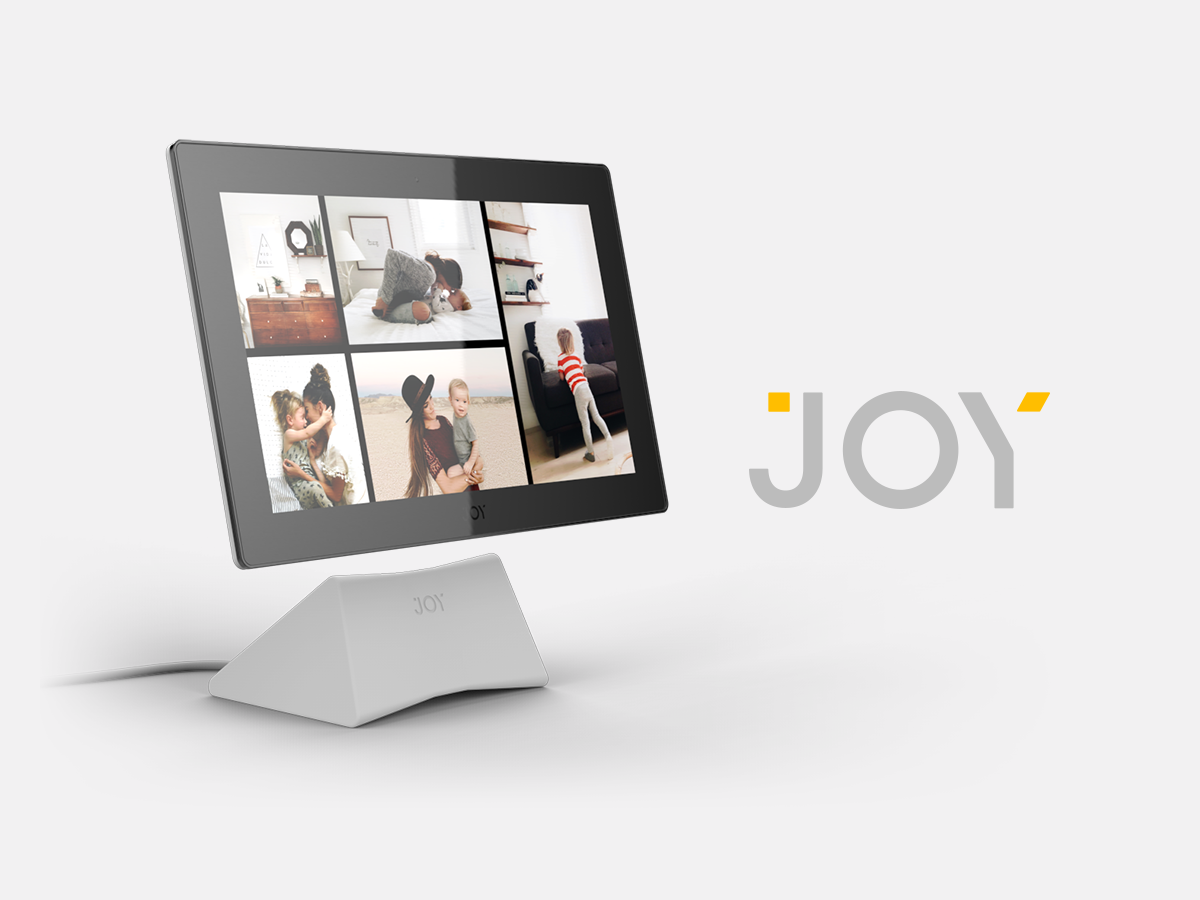Joy, hardware startup and resident positive emotion, today announced the launch of its first product, the Joy Album — an interactive photo frame designed from the ground up. Joy has raised $2.5 million in seed funding from investors including Obvious Ventures, The Chernin Group, BoxGroup, and Maywic Select Investments.

At first glance, the tablet-like device seems to have a lot in common with early digital photo frames sold to your parents at places like Target and Best Buy. However, Joy isn’t marketing this to your parents, it’s trying to market something for your parents to you.
CEO Alan Chan explains that the idea for Joy came from his own experiences with his wife. The two would regularly take family photos on a variety of devices and then have to chase each other down to view them.
The 13.3 inch Joy Album comes standard with wireless charging which makes up for an otherwise brief five hour battery life. Taking a page from Apple, the device doesn’t contain a single port for anything. It has built-in speakers for video playback and a real time story telling feature. If two people with the device are in separate locations, they can call each other and view photos in unison all within Joy. The company also built a web app and mobile application for sending photos to the Joy Album. Users can upload photos directly to the device using 10GB of free photo storage, or email photos to a special account that will automate that process for quick and easy sharing on the go.
The downside is that while this nifty device costs $299 for early adopters, it’s eventually going to cost you about $499. Yes that’s cheaper than an iPad, but the Album is also essentially a single function device.
This isn’t the first time a company has tried to silo smartphone features into unique products. PonoPlayer, Neil Young’s now infamous hi-fi music player, failed trying to do music better as a standalone device. The jury is still out on the Pebble Core, a running assistant with GPS and music storage, for athletes that don’t want to drag their bulky smartphone on every run. Neither of these devices have a chance at being as ubiquitous as the smartphone, but that doesn’t mean that should be their benchmark.
 Another company, Aura, released the Aura Frame that automatically sifts out inappropriate photos from your photo library and selects your highest quality photos to display on a physical frame. It ships for $399 and comes with unlimited storage. Chan doesn’t count out using software later on to implement similar features, but for now is focused on making sure his hardware is perfectly adapted for the user and the in-person photo sharing experience.
Another company, Aura, released the Aura Frame that automatically sifts out inappropriate photos from your photo library and selects your highest quality photos to display on a physical frame. It ships for $399 and comes with unlimited storage. Chan doesn’t count out using software later on to implement similar features, but for now is focused on making sure his hardware is perfectly adapted for the user and the in-person photo sharing experience.
There’s a lot to be said about the smartphone’s role as an innately personal device. Joy plays right into this trend, assuming that people are better off if they don’t have to hand off their personal devices with private emails, documents, photos, and IOT access, every time they want to share something with a friend. And because it’s a public device, always sitting in the home, it opens itself up to a whole new series of interactions that otherwise wouldn’t happen.
If someone grabs your phone and starts scrolling through your photos, you would see that as a privacy violation. In contrast, if you hand curate the photos on the Album and someone stops to smile at a shot, you’re far more likely to be touched than irritated. Hopefully along the way, Joy can bring back the nostalgic fun of viewing photos with loved ones together, rather than the emotionally removed process of texting them or viewing them over social media. If all goes to plan, the Joy Album should ship in Summer of 2017. It can be preordered now on the company’s website.
